Disruptive EdTech Innovations & Ideas to Look Forwards In 2020
Long gone are the days when the vast majority of learning models were solely based on a rigid and traditional classroom model. EdTech is set to change that – and could be the biggest and also most profitable digitized sector the world has ever known as emerging technologies start to transform learning models.
As 2020 has come in, let’s take a look over the top tech innovations set to shake up the education landscape as well as some outstanding EdTech players to watch out in this exciting year.
Key Technologies that Underpin the EdTech Revolution
Before diving into the specific EdTech innovative trends, it’s essential to first go over some key technologies that will influence these trends.
Firstly and obviously, Artificial Intelligence (AI) will continue to fill gaps in learning and teaching, helping personalize and streamline the education sphere. Also, since students interact with several connected Internet of Things (IoT) devices and other digital tools, data will be gathered. This big data and analysis of it are instrumental for personalized learning, determining interventions, and what tools are effective.
Extended reality – encompassing virtual, augmented, and mixed realities (VR, AR, MR respectively) – will empower educators to create numerous learning opportunities that can engage students even further. Furthermore, the teaching and learning landscape is increasingly becoming mobile, and educational institutions are also figuring out ways to enhance the student experience by implementing mobile technology solutions – of course, this technology requires a capable network to handle the traffic demands, and 5G technology will provide powerful new mobile data capabilities.
Finally, blockchain technology still performs an indispensable significance, for instance, to offer educational institutions to store and secure student records.
Top 5 Disruptive EdTech Innovations Educators Should Look Forward In 2020
1. More Accessible Education
When it comes to the question of how accessible education is, there are not only financial considerations. Based on the UN’ fact sheet by February 2018, there are estimated to be more 263 million kids globally who are not getting a full-time education, the equivalent to one out of every five people aged between 5 and 17. Whereas there are a number of reasons why, some being clear – such as physically not having an educational facility to attend – others are less obvious, like a teacher not having the adequate training or resources to deliver effective education.
By “erasing” these concerns, online learning makes education available to those even in remote areas as well as makes it easy to share curriculum across borders. This is one of the ways EdTech solutions break down barriers of accessibility to high-quality education.
Furthermore, technology can enhance access to education. Lets’ take some typical examples! Digital textbooks that can be accessed online 24/7 will not require transportation to get to an educational facility or library during certain hours – not to mention some of them are completely free. Also, the digital copies are relatively cheap to produce, as a result, textbook fees aren’t as taxing for digital versions as they might be with physical versions that cost more to create.
By the same token, translating physical textbooks into all the languages natively spoken is cost-prohibitive for publishers when they are producing only physical copies of books. Digital versions make these translations much more feasible and affordable.
Within the classroom, the ultimate accommodation for learning differences is called “differentiated learning”, allowing students to have learning that is tailored to their individual needs. Differentiated learning, together with student-paced learning where students can move through and review material at the speed they need, will be much more workable when adopting the technology. Additionally, there exist various tech solutions for students who have physical or learning disabilities.
Not only does EdTech increase accessibility in your own classroom but it’s also making learning accessible around the world. For instance, massive open online courses (MOOCs) do grant students, particularly those from developing countries, access to educational resources they wouldn’t encounter otherwise. Some MOOCs boast as many as 11 million students, teaching new skills and providing a springboard to success for learners from around the world.
2. More Data-Driven Insights
Just like it does for other industries, technology has empowered educational institutions and educators to be more effective and efficient. So, how? By analyzing the data about the ways e-textbooks are consumed, or educational technology is used, crystal-clear data-driven insights for how to enhance learning can be attained – as well as present information to make wise decisions about what tools aren’t effective.
As already mentioned, technological advancements, such as big data, machine learning, and artificial intelligence, will allow for more in-depth personalization of the content for an individual’s learning needs. To be more specific, at the university level, data is no longer “siloed” or separated into individual department’s Excel spreadsheets but is consolidated at the institution level, thereby real-time insights can be extracted. With the aid of data-driven insights to readily see where students need more support and what support is necessary, teachers are freed up to inspire students and bring out big changes.
3. More Personalized Education
The personalized education experience is no longer a novel concept; however, EdTech can probably make achieving it much easier!
These days, classrooms are diverse and complex, but technology is lending a helping hand. Technological tools can free teachers up from administrative tasks such as grading and testing to develop individual student relationships. Also, they can employ a variety of learning tools through technology to offer students differentiated learning experiences outside of the long-established curriculum.
4. More Immersive Education
Virtual, Augmented, along with Mixed Reality technology, collectively known as Extended Reality, or XR, is making many educational life-long fantasies come true, bringing out immersive learning experiences to students no matter where they are.
“…to have a fully immersive experience really adds a new element of engagement within the user experience. Watching a video or playing games on a 2D surface is great, but to be immersed in a virtual world really enhances your ability to get lost in it.”- Moon Park, a Program Manager for Google’s interactive Augmented Reality platform, ARCore.
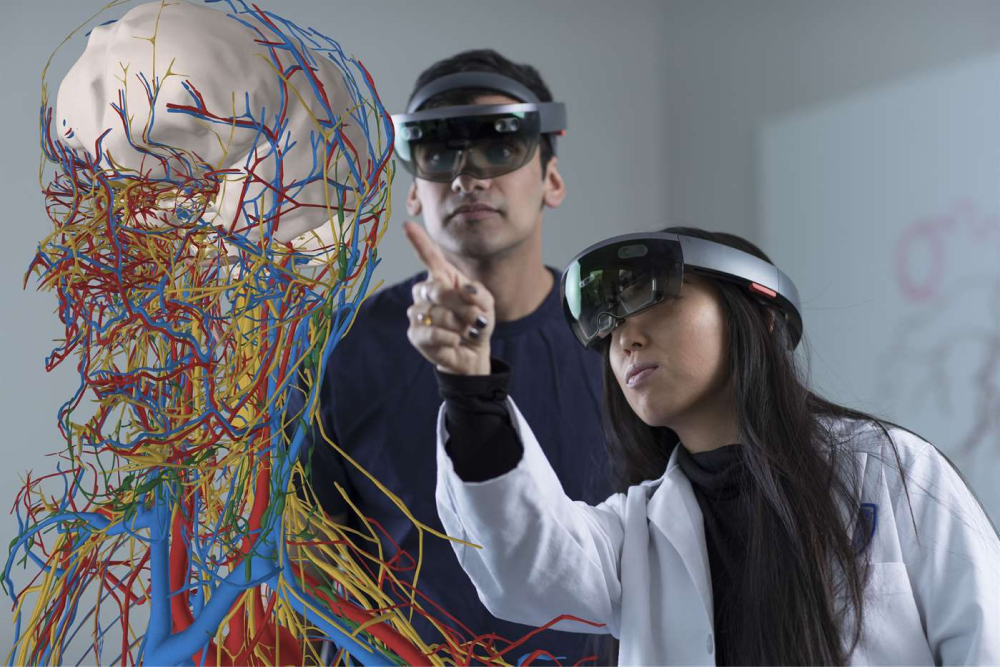
A lesson about ancient Egypt can literally come alive when a student puts on a VR headset and walks around a digital version of the time period. Also, they can virtually travel back in time to see how the Romans built their empire or watch Shakespeare’s A Midsummer Night’s Dream in The Globe Theatre. But more importantly, through such an exploration, students will gain a profound understanding of real present-day problems that are otherwise hard to conceptualize, such as visiting a refugee camp in Syria and see the lives of the residents.
“So, they shouldn’t just read about history — they should ‘be’ historians. They shouldn’t just study archaeology — they should ‘be’ archaeologists.” — James Corbett, Medical Virtual Reality Group.
Students get used to using voice interfaces at home when asking Alexa to define a word when doing homework – but in addition to such functionality, this technology can support learning and improve education in other ways. Chatbots can deliver lectures via conversational messages and engage students in learning with a communication tool they have become quite comfortable with. Eventually, should chatbots be able to make the learning process more engaging for students as well as ease the workload on human teachers, their adoption rate in education will continue to grow.
5. More Automated Schools
Nowadays, a large number of schools already rely on online assessments that are flexible, interactive, and efficient to deliver. Automation trends, like that, will continue to alter schools as more smart tools get incorporated, consisting of face recognition technology to take attendance, autonomous data analysis to inform learning decisions and so on. As a result, teachers no longer have to perform boring tasks of analyzing data and helping automate administrative tasks. When a student interacts with online technology, they leave a digital footprint that informs learning analytics.
What’s more, automation will enable teaching staff to control building costs by automatically controlling lighting and heating/cooling systems, making sure students are safe with automated school security systems.
EdTech Companies with Exciting Ideas to Watch Out For 2020
#1: Vectorly
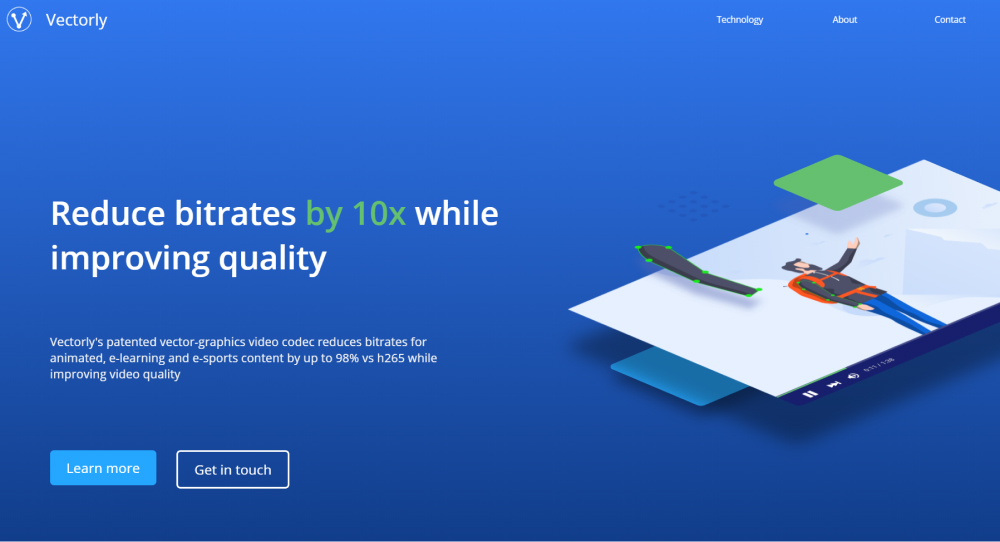
Founded in 2015 and based in San Francisco and Bangalore, Vectorly is a video compression startup from MIT, whose vectorization technology makes videos up to 50x smaller without quality loss.
Focusing on the problem of making online video-learning more accessible in emerging markets, co-founders Sam Bhattacharyya and Tunde Alawode originally developed a video-learning app focused on Subsaharan Africa. In the process of developing this app, Tunde and Sam came up with the idea for vector-based video, which was piloted and then fully integrated into the app in 2017. Up to now, Vectorly’s app, which has approximately 6 courses and 5000 videos, has helped over 50,000 students in West Africa study for the regional university entrance exam.
When it comes to Vectorly’s patented technnology, Video Vectorization is a new kind of video compression technology, which utilizes computer vision and vector graphics to reduce bitrates for video content by an order of magnitude (or more) compared to HEVC, while improving video quality. This would be primarily effective for “vector-friendly” video content, which would include animations, screen-casts, many e-learning videos and potentially 3d gaming content.
By leveraging existing vector-graphics rendering capabilities on all devices, this codec would not require end-users, OEMs or browsers to install any special software to enable playback of these videos. Until now, Vectorly’s team is still in the early phases of developing this fascinating technology.
#2: Rezzio Learning
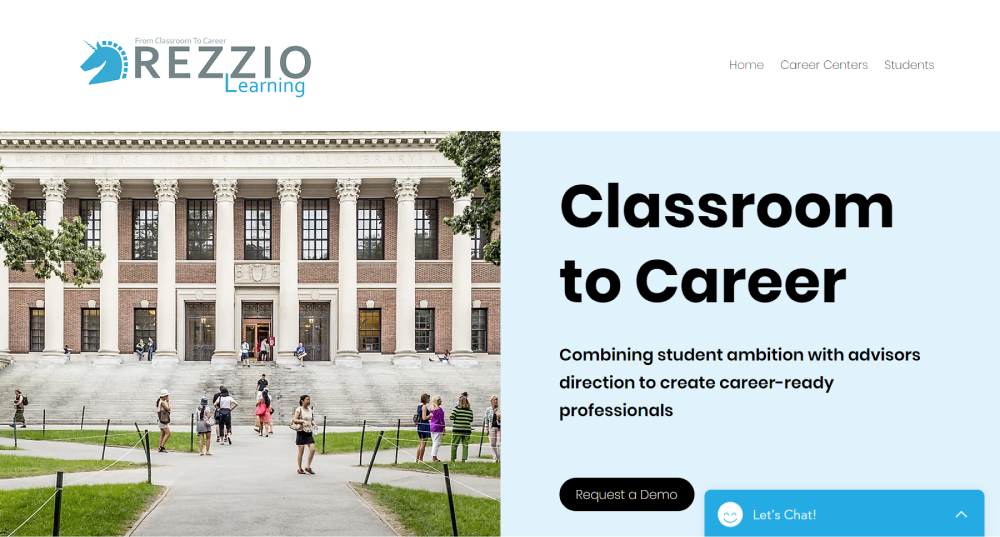
Founded in 2018, Rezzio Learning is a new EdTech player offering career readiness solution for colleges and universities that facilitates and tracks digital and physical learning events. Through its platform, Rezzio Learning empowers students and institutional leaders to adapt to the ever-changing job market through its robust data analytics and recommendation engine. Also, Rezzio does support key stakeholders as they update their curricula and design initiatives to positively influence student outcomes.
Now, let’s take a deeper look over Rezzio’s tech-powered ideas! In practice, Rezzio Learning focuses on improving and automating the 1-on-1 career counseling process by personalizing meetings, providing student data, and monitoring their progress all at the click of a button.
- Skills badging and assessment: Rezzio Learning supports students gain and display acquired skills through digital badges that track their progress and proficiency.
- Track experiential learning outcomes: Rezzio Learning offers students several opportunities for reflection and progress tracking of their career journey so as to help refine their career goals.
- Custom Career curriculum: Rezzio Learning design an in-depth framework for students to plan and navigate their career pursuit in order to improve future career decisions.
Also, to help students to identify, pursue as well as execute on their career track, Rezzio Learning adopts an online career curriculum and offers a personalized career plan based on students’ personalities and goals by tailoring student experiences towards the career of their choice.
#3: Circletime
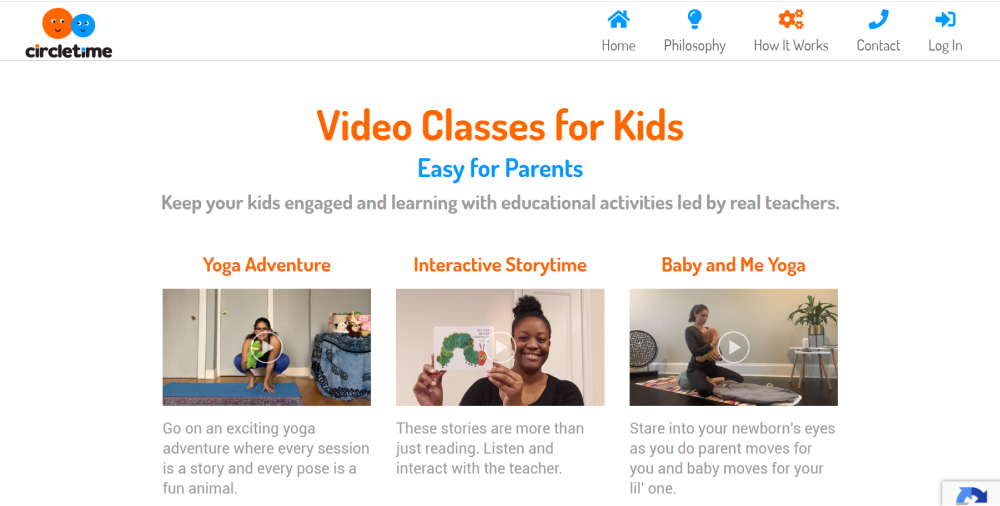
Circletime was established with a mission to empower parents to support their children’s optimal development through shared learning experiences that are convenient and effortless. To accomplish such a mission, Circletime platform brings online access – anytime and anywhere – to early childhood enrichment classes that are developed and led by specialists.
The National Education Association does confirm that family engagement is profoundly impactful in children’s long-term educational achievements. And it is also highlighted that the most significant type of involvement is what parents do at home. With Circletime, families will gradually create healthy learning habits and routines that will take them beyond the early years into their children’s formal educational journey.
To be more exact, Circletime’s teams advance education and well-being by providing live, interactive “Mommy and Me” classes that are engaging for parents and educational for children. Every group session is led by a certified subject-matter expert. The hands-on sessions are evidence-based and promote healthy play activities that continue beyond the class. The focus is on children 0-8 years old and will encompass curriculum that promotes social-emotional, physical and cognitive development.
From the technological perspective, Circletime is refining streaming and video-chat technology to create a “virtual circle time” that delivers a fun family UX, enabling:
- Parents to get personalized feedback and advice from specialists
- Strengthening of the parent-child attachment
- Of families’ social and support networks
#4: StartNOO
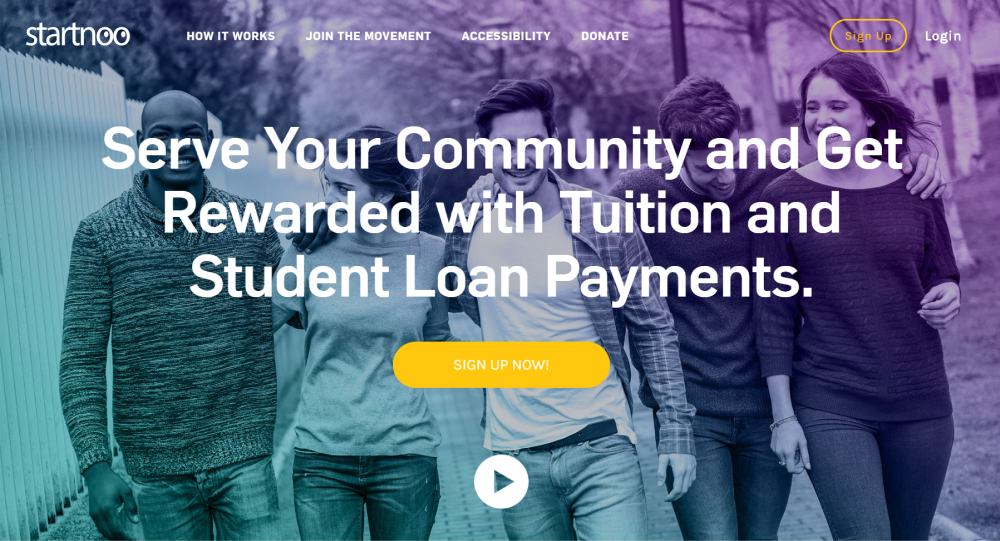
The latest student loan debt statistics for 2019 reveals how serious the student loan debt crisis has become for borrowers across all demographics and age groups. There are staggeringly 45 million borrowers who collectively owe more than $1.5 trillion in student loan debt in the U.S. Up to now, student loan debt stands as the second highest consumer debt category – behind only mortgage debt – and higher than both credit cards and auto loans.
In fact, more and more people are unable to make major life decisions, such as purchasing a home or getting married, because of heavy student loan debt and tuition burdens. Some students are even pursuing higher degrees just so they can postpone the looming payments that would have kicked in 6 months after graduation.
With a view to easing these financial concerns, STARTNOO developed a platform that allows students and alumni to exchange services for payments towards their student loans. Through this platform, students, alumni, nonprofits, and donors work together to abolish the growing financial burden of higher education.
The Bottom Lines
The next technological revolution is upon us. Every single aspect of learning and teaching will be, more or less, transformed. Let’s watch out new EdTech trends, look for disruptive ideas and more importantly, be well-prepared to together “reshape” a bright and connected future of education.









